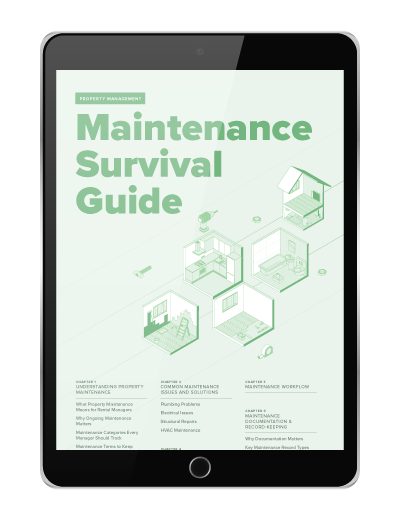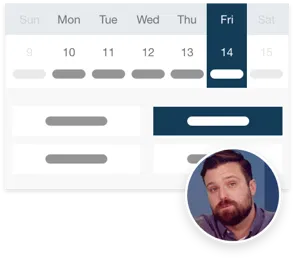As a property manager, leasing is always a top priority—after all, without tenants, there’s no income. But a successful property management strategy goes beyond filling vacancies. You need a plan that supports long-term success and maximizes profitability. This means balancing leasing with maintenance, tenant relations, financial management, and legal compliance. If you overfocus on one, you might neglect others—and that could hurt your bottom line.
In this blog, we’ll explore how leasing should fit into your broader property management priorities, how to divide your attention between different tasks, and tools you can use to make the job easier while performing at an even higher level.
Leasing and Property Management: Why It Matters
Leasing is the lifeblood of residential property management. It’s the process that keeps your property full and generating income. But properly managing each lease isn’t just about filling vacancies and collecting rent—it also involves a collection of strategies to attract the right tenants and keep them happy.
Leasing directly affects your occupancy rate and revenue. The quicker you lease a property, the more consistent your cash flow. And when you attract reliable, long-term tenants, you reduce turnover, which is costly and disruptive. Good leasing isn’t just about filling units—it’s about filling them with quality tenants who will stick around.
Here’s how the initial steps of the leasing lifecycle typically play out:
- Marketing the Property: This is where it all begins. You create listings, take photos, write descriptions, and share your property on rental websites. This part is essential to get the ball rolling and draw interest.
- Showing the Property: Whether it’s in-person or virtual, you need to showcase the property’s best features. A good showing is your chance to build rapport with potential tenants and answer questions about the space.
- Tenant Screening: Once you have interested tenants, you must screen them. You’ll check references, run background checks, and review financials. This step is key to finding tenants who will pay on time and care for your property.
- Negotiating Lease Terms: After finding the right tenant, you’ll negotiate the lease terms, including rent, deposits, and policies. Clear, fair agreements set the tone for a good landlord-tenant relationship.
- Finalizing the Lease: Once all terms are agreed upon, the lease is signed, and the tenant moves in.
However, leasing doesn’t stop here. You’ll also need to orchestrate a seamless move-in process, set up channels for convenient communication, outline a process for submitting and completing maintenance requests, and prepare for the possibility of tenants moving out. We’ll cover all these considerations and how they fit into other property management tasks in the next few sections.
Other Leasing and Property Management Tasks to Consider
While leasing often steals the spotlight, you can’t forget about the other tasks that keep your property running. Each one plays an important role in maintaining property values, staying compliant, and offering tenants a good living experience.
1. Maintenance and Repairs
Maintenance goes beyond cleaning—keeping your property in tip-top shape prevents bigger, more expensive issues down the line. Regular upkeep, such as servicing HVAC systems, fixing leaks, and addressing pest control, helps avoid tenant complaints and reduces the need for emergency repairs. Quick, effective responses to maintenance requests also build trust with tenants, leading to better retention.
2. Tenant Relations and Retention
Happy tenants are more likely to renew their leases and recommend your property to others. By addressing concerns promptly and communicating openly, you can foster positive relationships that reduce turnover. A tenant who feels heard and respected is more likely to stay and less likely to cause problems.
3. Rent Collection and Financial Oversight
Collecting rent is one of your core duties. But beyond simply gathering payments, you need to monitor cash flow, manage budgets, and track expenses. This allows you to keep an eye on your property’s profitability and make informed decisions about rent adjustments, upgrades, or necessary repairs.
4. Legal Compliance
You must stay on top of local, state, and federal regulations to avoid legal trouble. From landlord-tenant laws to building codes, it’s your job to know the rules and follow them. Keeping your property compliant not only prevents fines but also keeps tenants protected.
5. Ongoing Marketing and Advertising
Once a unit is leased, your job isn’t done. If you’ve got multiple units, you’ll need to keep marketing even when you’re not actively showing units. Advertising and keeping an updated website will ensure that when the time comes, you have a strong pipeline of prospects ready to fill vacancies.
Each of these responsibilities is interconnected. For instance, if you neglect maintenance, your tenants might become unhappy and leave. Or if you don’t keep up with legal requirements, you could face costly fines. Balancing these tasks is key to running a successful property.
Balancing Leasing and Property Management Tasks
As much as leasing is important, it’s just one piece of the puzzle. But how do you strike the right balance between leasing and all your other responsibilities?
The Case for Leasing Priority
When your property is empty, leasing becomes your top priority. High vacancy rates mean lost income, so marketing your units, showing them, and signing leases should take center stage. The more efficiently you lease, the quicker you’ll see your property filled and generating revenue again.
The Dangers of Focusing Too Much on Leasing
That said, don’t sacrifice other tasks in the process. If you focus solely on leasing, you may forget to address maintenance issues or follow up with tenants. When these things pile up, they can create problems—late rent payments, unhappy tenants, and higher turnover rates. Neglecting things like setting up a reliable vendor network or regular checks for legal compliance can lead to costly and avoidable issues down the line.
Here’s what can happen when you neglect other aspects of property management:
- Tenant Turnover: If you’re not taking care of your tenants’ needs, they’re likely to move out. Constant turnover means you’re always back at square one, spending more time and resources on leasing than on long-term property care.
- Property Deterioration: Skipping regular maintenance can lead to bigger repair costs later. Small issues can turn into major problems, and your property’s value might suffer.
- Legal or Financial Trouble: Failing to follow through on rent collection or legal compliance can result in lost revenue, fines, or even lawsuits.
Balancing leasing with everything else in property management is key. Focusing on leasing won’t do you any good if you’re ignoring the other tasks that keep your property functioning.
Best Practices for Allocating Leasing and Property Management Resources
So, how do you allocate your resources efficiently between leasing and other property management tasks? Here are a few practical strategies to help you balance both:
1. Embrace Technology
Use property management software to automate tasks where you can. Rent collection, lease renewals, and maintenance requests can be automated to save time. This allows you to focus on more hands-on activities and strategic decision-making.
Comprehensive software such as Buildium lets you manage every aspect of your business from one unified platform, so you can better allocate your resources and spend less time on routine tasks.
2. Delegate Tasks
You don’t have to do everything yourself. Hiring the right team or outsourcing certain tasks, such as maintenance or accounting, lets you focus on what’s most important—whether that’s leasing or resolving tenant issues. Delegating effectively is the best way to give every area of the properties you manage the attention it needs.
3. Track Performance Metrics
Regularly monitor key performance metrics such as occupancy rates, maintenance costs, and tenant satisfaction. By keeping an eye on these numbers, you can adjust your priorities as needed. For example, if occupancy rates drop, you might need to allocate more time to leasing efforts. If maintenance requests are piling up, focus on that for a while.
4. Set Priorities Based on Need
Not all tasks are created equal. If you’ve got a full building with happy tenants, focus more on maintenance and tenant relations. If you’ve got empty units, shift your focus to leasing. Flexibility is key. Set priorities that align with the needs of your property and adjust them as circumstances change.
Read More: Check out our detailed guide to the leasing lifecycle software to further fine tune your leasing and property management strategies.
Tools to Help with Leasing and Property Management Tasks Across the Board
Leasing is a key part of property management, but it’s only one piece of the puzzle. To run a successful property, you need to balance leasing with maintenance, tenant relations, rent collection, and legal compliance. Neglecting one area can lead to costly mistakes down the road.
By using technology, delegating tasks, tracking performance, and adjusting your priorities, you can allocate resources effectively and keep your property running smoothly. If you’re struggling with balancing leasing and other tasks, take a moment to reassess your approach and make adjustments.
Buildium offers a host of leasing features that integrates with its accounting tools, maintenance tracking, and communication portals, along with an ever-growing marketplace of partner solutions to help with more specific tasks. You can test the software out for yourself with a free 14-day trial or by signing up for a guided demo.
This kind of tech, combined with a balanced leasing strategy will help you build long-term success, keep tenants happy, and ultimately increase your profitability. Remember, property management is about more than filling vacancies—it’s about creating a thriving environment where tenants and owners alike can prosper.
Read more on Uncategorized


